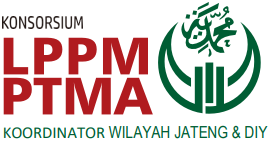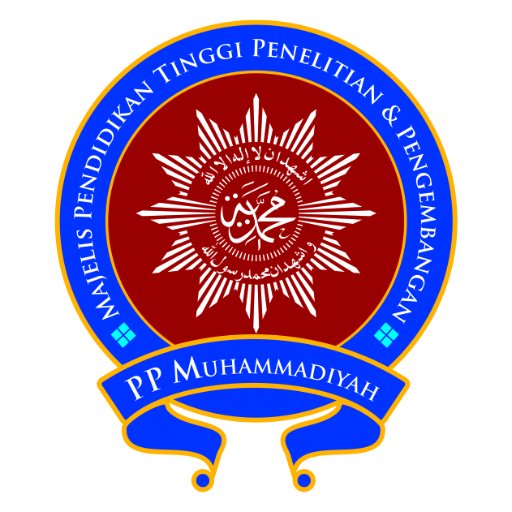Article Review: Cytotoxicity of Noni (Morinda citrifolia L) Ethanol Extract on Cancer Cells
DOI:
https://doi.org/10.53017/ujas.201Keywords:
Morinda citrifolia, Sitotoksik, IC50, Sel kankerAbstract
Cancer is a disease that can attack any part of the body when the abnormal cells begin to grow uncontrollably beyond the limit, then attack the connected parts of the body and / or spread to other organs. The noni plant (Morinda citrifolia L) is a herbal plant that can be used as a treatment for various diseases, one of which is cancer. The noni (Morinda citrifolia L) plant contains phytochemicals ranging from fruit, seeds, leaves and roots. This review article aims to examine the cytotoxicity effects of noni (Morinda citrifolia L) plants on cancer cells. The library sources in this article review use the Google Scholar and PubMed databases. The inclusion criteria used were articles containing the cytotoxic test of noni (Morinda citrifolia L) with the last 10 years of publication (2011-2020), original research, there were results of anticancer activity in the form of IC50 and research using noni plant extracts (Morinda citrifolia L). The exclusion criteria used were articles that did not contain a full text, used plants with different genus, did not have an IC50 value and were not original research. From the journals that have been analyzed, it can be said that the extract of the noni (Morinda citrifolia L) plant can be developed for cancer treatment. Noni plant has cytotoxic activity because it contains active compounds in the form of damnacanthal, nordamnacanthal, morindone, flavonoids and alkaloids. Based on the results of the cytotoxic test of Morinda citrifolia extract, the plant parts that have the strongest cytotoxic effect are fruit> roots> root bark> leaves> shoots.
Downloads
References
WHO, “Cancer,” World Health Organization (WHO), 2020. https://www.who.int/health- topics/cancer#tab=tab_1 (accessed Jun. 01, 2020).
C. Badri, “Penanggulangan Kanker Di Indonesia: Peran Nanotechnology Dalam Diagnosis Dan Terapi,” Jurnal Sains Materi Indonesia, pp. 11–14, 2019.
C. A. Wijaya and M. Muchtaridi, “Pengobatan kanker melalui metode gen terapi,” Fak. Farm. Univ. Padjadjaran, Sumedang, Jawa Barat, Indones, vol. 15, pp. 53–68, 2017.
A. L. Demain and P. Vaishnav, “Natural products for cancer chemotherapy,” Microbial biotechnology, vol. 4, no. 6, pp. 687–699, 2011.
N. Agarwal, C. Majee, and G. S. Chakraborthy, “Natural herbs as anticancer drugs,” Int J PharmTech Res, vol. 4, no. 3, pp. 1142–1153, 2012.
S. S. Syamsuhidayat and J. R. Hutapea, “Inventaris tanaman obat Indonesia,” Departemen Kesehatan RI, Jakarta, vol. 1, pp. 286–287, 1991.
R. Abou Assi, Y. Darwis, I. M. Abdulbaqi, L. Vuanghao, and M. H. Laghari, “Morinda citrifolia (Noni): A comprehensive review on its industrial uses, pharmacological activities, and clinical trials,” Arabian Journal of Chemistry, vol. 10, no. 5, pp. 691–707, 2017.
M. Lohani et al., “Immunomodulatory actions of a Polynesian herb Noni (Morinda citrifolia) and its clinical applications,” Complementary Therapies in Medicine, vol. 47, p. 102206, 2019.
K. Sharma et al., “Anticancer effects of extracts from the fruit of Morinda Citrifolia (Noni) in breast cancer cell lines,” Drug research, vol. 66, no. 03, pp. 141–147, 2016.
A. N. Ahmad, Z. M. Daud, and A. Ismail, “Review on potential therapeutic effect of Morinda citrifolia L.,” Current Opinion in Food Science, vol. 8, pp. 62–67, 2016.
W. Li, J. Zhou, and Y. Xu, “Study of the in vitro cytotoxicity testing of medical devices,” Biomedical reports, vol. 3, no. 5, pp. 617–620, 2015.
J. L. Sebaugh, “Guidelines for accurate EC50/IC50 estimation,” Pharmaceutical statistics, vol. 10, no. 2, pp. 128–134, 2011.
N. Weerapreeyakul, A. Nonpunya, S. Barusrux, T. Thitimetharoch, and B. Sripanidkulchai, “Evaluation of the anticancer potential of six herbs against a hepatoma cell line,” Chinese medicine, vol. 7, no. 1, pp. 1–7, 2012.
H. Putri, “Protokol: uji sitotoksik metode MTT,” Cancer Chemoprevention Research Center, Fakultas Farmasi, UGM, 2013.
G. Shaghayegh, A. M. Alabsi, R. Ali-Saeed, A. M. Ali, V. K. Vincent-Chong, and R. B. Zain, “Cell cycle arrest and mechanism of apoptosis induction in H400 oral cancer cells in response to Damnacanthal and Nordamnacanthal isolated from Morinda citrifolia,” Cytotechnology, vol. 68, no. 5, pp. 1999–2013, 2016.
N. H. Zamakshshari, G. C. Lian Ee, S. H. Mah, Z. Ibrahim, and S. S. Teh, “Cytotoxic Activities of Anthraquinones from Morinda citrifolia towards SNU-1 and LS-174T and K562 Cell Lines,” Archives of Natural and Medicinal Chemistry, pp. 23823–23848, 2017.
V. SRINIVASAHAN and B. DURAIRAJ, “In Vitro Cytotoxic and Apoptotic Activity of Polysaccharide Rich Morinda Citrofolia Fruit on Mcf-7 Cells,” IN VITRO, vol. 8, no. 2, 2015.
T. Candida et al., “Evaluation of antitumoral and antimicrobial activity of Morinda lcitrifolia L. grown in Southeast Brazil,” Acta Cirúrgica Brasileira, vol. 29, pp. 10–14, 2014.
S. Sudewi and W. A. Lolo, “Kombinasi ekstrak buah mengkudu (Morinda citrifolia L.) dan daun sirsak (Annona muricata L.) dalam menghambat bakteri Escherichia coli dan Staphylococcus aureus,” Kartika: Jurnal Ilmiah Farmasi, vol. 4, no. 2, pp. 36–42, 2016.
M. Meli, N. H. Shafie, S. P. Loh, and A. Rahmat, “Anti-proliferative and apoptosis-inducing effects of Morinda citrifolia L. shoot on breast, liver, and colorectal cancer cell lines,” Mal J Med Health Sci, vol. 15, pp. 129–135, 2019.
S.-L. Lim, N. M. Mustapha, Y.-M. Goh, N. A. A. Bakar, and S. Mohamed, “Metastasized lung cancer suppression by Morinda citrifolia (Noni) leaf compared to Erlotinib via anti-inflammatory, endogenous antioxidant responses and apoptotic gene activation,” Molecular and cellular biochemistry, vol. 416, no. 1, pp. 85–97, 2016.
M. R. Priamsari and N. A. Yuniawati, “Skrining Fitokimia dan Aktivitas Penyembuhan Luka Bakar Ekstrak Etanolik Morinda Citrifolia L. pada Kulit Kelinci (Oryctolagus Cuniculus),” Jurnal Farmasi (Journal of Pharmacy), vol. 8, no. 1, pp. 22–28, 2019.
W. Tian, C. Wang, D. Li, and H. Hou, “Novel anthraquinone compounds as anticancer agents and their potential mechanism,” Future Medicinal Chemistry, vol. 12, no. 7, pp. 627–644, 2020.
M. K. Chahar, N. Sharma, M. P. Dobhal, and Y. C. Joshi, “Flavonoids: A versatile source of anticancer drugs,” Pharmacognosy reviews, vol. 5, no. 9, p. 1, 2011.
V. M. Patil and N. Masand, “Anticancer potential of flavonoids: chemistry, biological activities, and future perspectives,” Studies in natural products chemistry, vol. 59, pp. 401–430, 2018.
Z. Habli, G. Toumieh, M. Fatfat, O. N. Rahal, and H. Gali-Muhtasib, “Emerging cytotoxic alkaloids in the battle against cancer: Overview of molecular mechanisms,” Molecules, vol. 22, no. 2, p. 250, 2017.
Downloads
Published
How to Cite
Issue
Section
License
Copyright (c) 2022 Haryoto, Gita Firdaus

This work is licensed under a Creative Commons Attribution-NonCommercial 4.0 International License.





